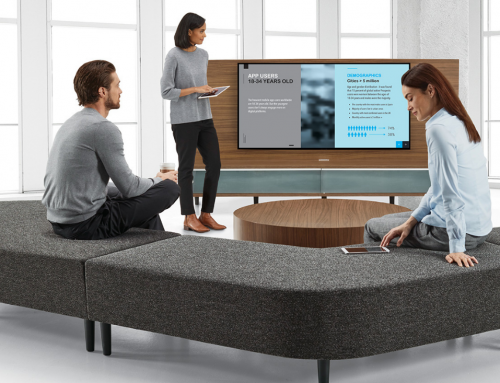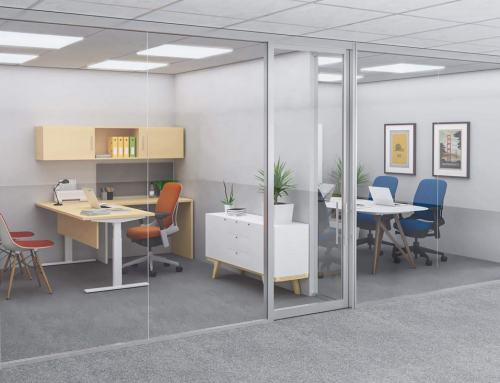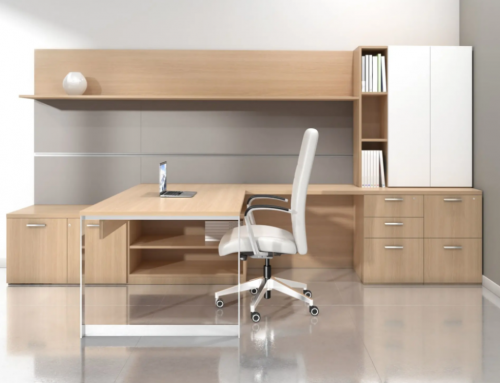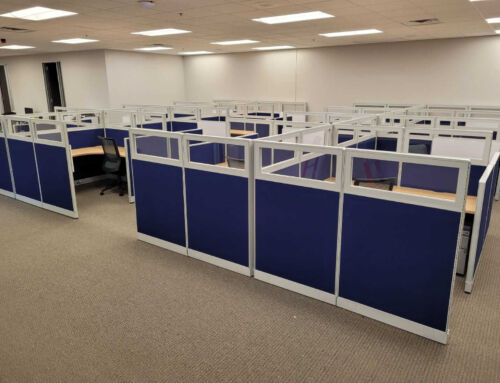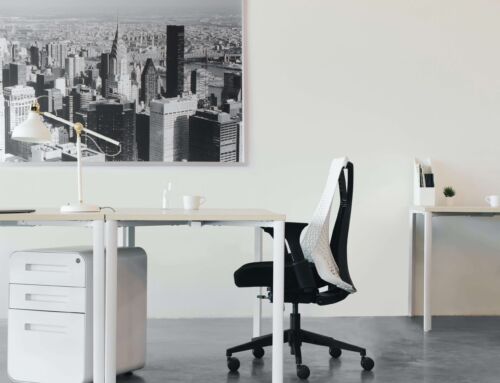Coworking Space Furniture in Your Office Design
“Wow!” If you get your office design and coworking space furniture right, this could be the reaction of every visitor. Be they a potential client or potential talent, office design can make or break that vital first impression. Recent years have seen many changes in the office, especially as technology continues to grow and younger generations take the places of older employees. Maybe you want to implement some of the newer trends in coworking space furniture and office design? Allow us to make a case for borrowing ideas from coworking space concepts.
One idea is that many coworking spaces don’t have dedicated workstations or coworking space furniture. When someone shows up to work, they can decide then which desk they want to sit at and with whom. Sometimes it is not even a desk at all; maybe it’s a sofa or a private phone booth. In the non-coworking world, this has become known as hotdesking.
Hotdesking?
This concept bases itself on research that says as high as 40% of dedicated desk space can sit unused on any given day. Employees may be on vacation, have a flex schedule, or are in back-to-back meetings all day.
Is their desk sitting unused, is that as efficient use of space?
Those who know it’s not have looked to hotdesking as an effective alternative.
Fewer workspaces can serve the same number of workers. Many offices are becoming more activity-centered. They use office furniture like large tables or groups of armchairs and sofas, where workers can use portable devices. They still have desks but if all the desks are in use, there will be plenty of other places to find a comfortable workspace. Studies show that some employees (millennials in particular, since they are the first generation to grow up with smart technology) don’t like being bound to assigned seating arrangements and can be much more productive moving from space to space as their tasks dictate.
So, how would you know if including coworking space furniture for hotdesking will work for your office? Let’s look at the pros and cons.
The Perks of Coworking Furniture in Your Office Layout
Save on overhead. If you have a workforce of one hundred workers, and on average, only eighty people are in the office on any given day, you’ll have twenty empty desks taking up space. That’s not efficient. A sizable portion of office overhead is committed to office space and maintenance. You could cut back on furniture and hardware costs. Then some of that initially wasted space could be better tapped as a meeting area or project development space, ultimately saving you money and benefiting your bottom line.
Employees will socialize more, which is a good thing. Employees who work beside a different person every day will interact more, communicate with more departments, finding inspiration where they couldn’t before. Socialization with a greater variety of people often leads to higher company cohesion and increased collaboration.
Employees will naturally optimize space for productivity. People are more prone to choose an area that will meet their needs for that day. Do they have many client calls on the schedule? A small meeting room, private office or less-crowded nook would better serve their purposes. Are they collaborating with fellow employees to meet a project deadline? That would likely be better accomplished in a room with whiteboards or presentation software rather than clustered around a single desk. When you design your office to allow employee flexibility, workers who thrive on independence and mobility will be more productive and happier.
And Now… The Potential Cons
Employees could feel uncomfortable looking for a workspace. Unfortunately, not everyone works well in a flexible office environment. Some could experience anxiety about whether they’ll have their preferred desk that day because they’re late due to a doctor’s appointment or traffic. Some employees would simply rather not share space with others.
Hygiene can be a significant factor. One person may eat at their desk; another would never consider it and will resent the crumbs. Shared phones can pass germs around quickly. One employee’s sniffle on Monday develops into the whole office’s nasty cold come Friday. Requiring cleaning standards and providing antibacterial wipes and hand sanitizer will help to avoid most of this.
People often form their own rules around “things.” Humans are inherently social creatures. Without specified rules for behavior (such as going to an assigned desk every day), we will make our own rules. Keep an eye out for territoriality and clique-forming. Those who thrive on routine will naturally be drawn to the same spaces every day, and when someone intrudes on what they’ve come to think of as “theirs” (even without desk assignments), it could build resentment. People who work well with specific others may always try to work with those same coworkers. For some, that could mean exclusion from the “cool kids table.” Keep your finger on the pulse of your office culture. The quickest way to reduce employee morale and job satisfaction is to allow an intolerant or hostile environment to form. This is especially true for marginalized groups. Your turnover will become high if people don’t feel they have a safe environment at work.
Implementing areas and office furniture inspired by coworking space furniture can limit an employees’ ability to personalize their environment. People sometimes need a little familiarity like a photo of their family or a trinket that speaks to who they are. When having no assigned desk, some workers may feel lost leading to stress and sentiments of being under-appreciated and overlooked. Employers can mitigate this by offering lockers where employees can hang their favorite calendar or drawings their children made. However, carrying those things around every day isn’t always ideal, and they can begin to show wear and tear when handled that much.
Ever felt that satisfaction when you finally get your office chair adjusted to that perfect height and angle with exactly ninety-degree elbows? Tomorrow, that’s all gone out the window. That’s not your permanent chair. Tomorrow you might be on a sofa because there are more people are in the office, and you’ve got a meeting first thing in the morning. Ergonomics are essential, and if you’ve got the office chair that wobbles (and every office has that chair), you could be the unlucky one. Employers should ensure that all equipment and office furniture is in prime working order and is easily adjustable.
Coworking space furniture policies.
Employers who decide to use coworking space office furniture and design ideas need to be clear with their policies about technology and furniture use and replacement. Crystal clear about cleanliness and hygiene, and headphone usage for high traffic areas. It will help smooth the transition and help prevent the cons listed above.
Written by:
John Ofield
President/CEO at Collaborative Office Interiors
Collaborative Office Interiors is a complete office furniture and systems provider in the Houston, Austin and San Antonio area. COI specializes in providing high quality/low-cost solutions to companies that are moving, upgrading or expanding.
John opened ROSI Office Systems in 1993 and the company today is on Inc. Magazines’ Top 5000 Fastest Growing Companies in 2018. John specializes in new office furniture, space planning, new workstations, Work Fit products, remanufactured Haworth cubicles, asset management, furniture liquidation, and office furniture rentals.
